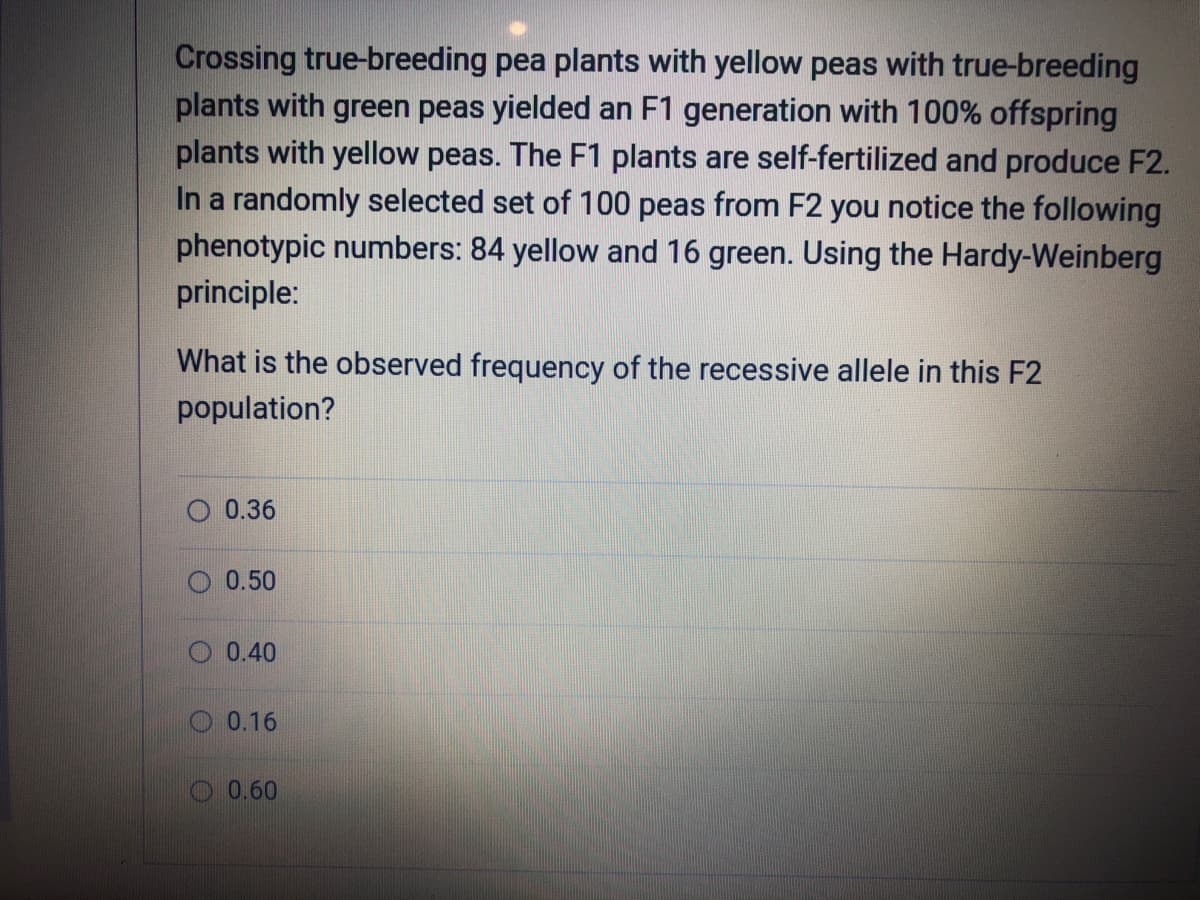Crossing true-breeding pea plants with yellow peas with true-breeding plants with green peas yielded an F1 generation with 100% offspring plants with yellow peas. The F1 plants are self-fertilized and produce F2. In a randomly selected set of 100 peas from F2 you notice the following phenotypic numbers: 84 yellow and 16 green. Using the Hardy-Weinberg principle: What is the observed frequency of the recessive allele in this F2 population?
Crossing true-breeding pea plants with yellow peas with true-breeding plants with green peas yielded an F1 generation with 100% offspring plants with yellow peas. The F1 plants are self-fertilized and produce F2. In a randomly selected set of 100 peas from F2 you notice the following phenotypic numbers: 84 yellow and 16 green. Using the Hardy-Weinberg principle: What is the observed frequency of the recessive allele in this F2 population?
Human Heredity: Principles and Issues (MindTap Course List)
11th Edition
ISBN:9781305251052
Author:Michael Cummings
Publisher:Michael Cummings
Chapter5: The Inheritance Of Complex Traits
Section: Chapter Questions
Problem 7QP: Sunflowers with flowers 10 cm in diameter are crossed with a plant that has 20-cm flowers. The F1...
Related questions
Question

Transcribed Image Text:Crossing true-breeding pea plants with yellow peas with true-breeding
plants with green peas yielded an F1 generation with 100% offspring
plants with yellow peas. The F1 plants are self-fertilized and produce F2.
In a randomly selected set of 100 peas from F2 you notice the following
phenotypic numbers: 84 yellow and 16 green. Using the Hardy-Weinberg
principle:
What is the observed frequency of the recessive allele in this F2
population?
0.36
0.50
0.40
0.16
0.60
Expert Solution
Step 1: Introduction:
The Hardy-Weinberg principle states that genetic variation will remain constant in a large population that randomly mates. In the absence of natural selection or forces like genetic drift, mutation, and migration that drive the natural selection the genotype frequencies will remain constant for the population to be in Hardy-Weinberg equilibrium. This law predicts that rare alleles are mostly seen in heterozygous conditions than in homozygous conditions.
Trending now
This is a popular solution!
Step by step
Solved in 4 steps with 1 images

Knowledge Booster
Learn more about
Need a deep-dive on the concept behind this application? Look no further. Learn more about this topic, biology and related others by exploring similar questions and additional content below.Recommended textbooks for you

Human Heredity: Principles and Issues (MindTap Co…
Biology
ISBN:
9781305251052
Author:
Michael Cummings
Publisher:
Cengage Learning

Human Heredity: Principles and Issues (MindTap Co…
Biology
ISBN:
9781305251052
Author:
Michael Cummings
Publisher:
Cengage Learning